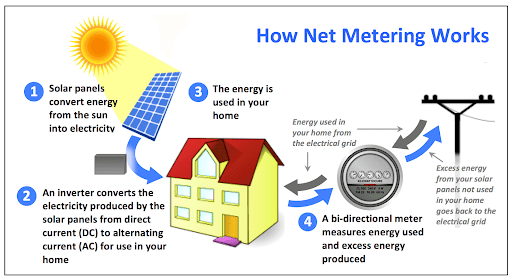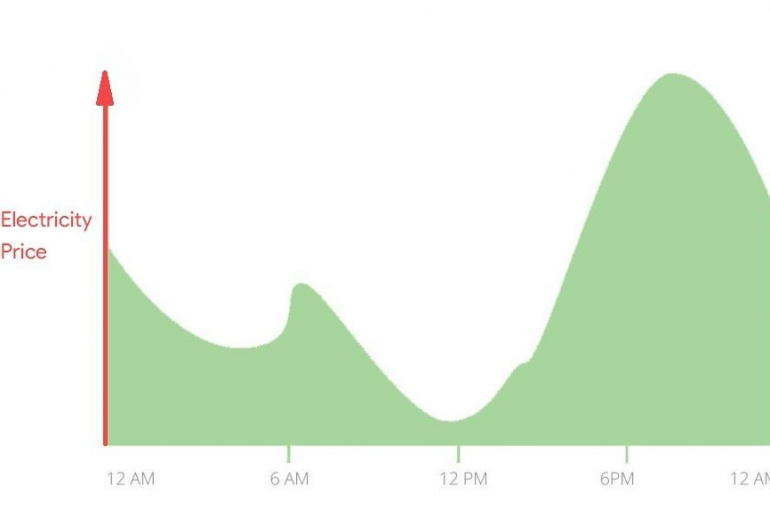On April 15, California modified one of the most attractive residential solar net-metering programs in the nation. California has long been a leader in promoting residential solar power; it now produces more small-scale solar generation than the next nine largest-producing states combined. The recent decline in net-metering rates, orchestrated by the California Public Utilities Commission, has other states wondering if the Golden State is having second thoughts about the promotion of small-scale solar power.
Surprising as it may seem, this “Net-metering 3.0” regulatory decision could usher in a new era of consumer-led energy decisions that changes the balance of power in U.S. electricity markets and makes them much more interactive and co-dependent. In this post, we take a look at the promise and perils of California’s new approach to solar net metering.

Net Metering Facing Pressure from Public Utilities
Utility net-metering programs have been under pressure across much of America with the growing adoption of solar, including right here in New England. Vermont utilities have been ratcheting down net-metering rates for several years now. This means residential solar energy customers receive less than full credit for every excess kWh they sell to utilities to offset what they draw from the grid at night or when the sun isn’t shining. (Net-metering cutbacks in Vermont are discussed further in this recent post.)
The story is much the same in New Hampshire. The current solar net-metering credit ranges from 75% to 95% of the utility retail price, depending on the net amount of customer power drawn from the grid and at what time of year. This discounted payment schedule reflects “non-bypassable charges” that utilities apply for storm recovery and other grid-related expenses.
Across the nation, the rush is on to complete residential solar projects and lock in more favorable rates before more net-metering programs come under review.
Wherever net-metering policy changes are afoot, utilities are putting forward a common refrain: As more residential customers turn to homegrown solar power that’s cleaner and more affordable to use, utilities are losing sales on the grid. Utilities have turned this predicament into a fairness question, whereby low-income residential customers, who often lack the access to capital to make the switch themselves, end up carrying more of the load for maintaining the grid as solar customers start to drop off.
In state after state, utilities have used this fairness argument to their political advantage, putting solar advocates on their back foot about the original design principles of solar net-metering programs. However, when the dust settles in California in the wake of its 3.0 decision, a new strategy may emerge that finds common ground and uses net metering to everyone’s advantage. We’ll explore this “grand bargain” after going over a little more background.

Paradigm Shift in Battery Storage
All along, the big challenge presented by solar net metering has been what to do with excess solar power generation during the middle of the day. That’s when solar power is at its peak and home energy use is typically at a low ebb – too much solar supply and not enough demand.
Before April 15, residential solar customers in California were able to use the grid much like a giant battery to store solar electricity for use later in the day, or at night. Now, with the drop in net-metering rates, it is effectively costing more to store solar power on the grid, shifting the burden to residential solar customers to find other ways to make use of their sunshine that might otherwise go to waste.
Home batteries feature prominently in the list of solutions, especially when Net Metering 3.0 is banking only one-quarter of the retail value of solar credits for later use. This cutback has pushed solar payback times from 4 to 6 years to 8 to 10 years on average for new contracts now being signed in California. At the same time, it is making it even harder for low- and moderate-income customers to afford the $10,000+ added expense of including a home battery in new solar installations, even though batteries are now eligible for the more generous 30% federal tax credits that have been extended through 2032.
The New Grand Bargain
The California PUC is betting that new technology can bring utilities and solar customers closer together to manage a complex set of storage and generation decisions that cut utility peak loads and hasten decarbonization of the grid. The CPUC roadmap goes something like this:
- First, as cleaner and more affordable solar energy becomes available to run home appliances, heating systems and vehicles, demand for dirtier and more expensive grid power will start to decline. However, because some of these home electrical systems run day and night, home batteries now enter the equation.
- Fortunately, expensive home battery prices continue to fall, and phone-based apps have made it much easier to manage complex home-energy allocation decisions. The solar inverter is fast becoming the brains of this operation, making command-and-control decisions in real time about where and when to direct solar power – into home appliances, electric vehicles, battery storage, into the grid – or a mix of all four.
- Next in California’s roadmap is a perilous fork in the road that could drive some residential solar energy customers off the grid entirely, especially if net metering proves to be too punitive. This could lead to a utility death spiral whereby maintaining the grid falls to fewer and fewer customers with less financial means to back its aging generating system. There has to be a sweetener to keep residential solar customers engaged in the grid-generating process.
- In California, residential solar capacity has grown to such an extent that it now constitutes one-third of all solar capacity installed in the state. Rather than risk losing access to this substantial pool of clean energy, the California PUC wants to enlist residential solar customers in utilities’ quest to offset their peak loads, which are increasingly fueled by expensive natural gas, and to decarbonize the grid by 2035.
- With proper regulatory guidance and time-of-use rates to incentivize the dispatch of solar power at times of peak demand, residential customers can sell electricity into the grid at the most profitable times and store the rest in batteries for use at other times of their own choosing. Best of all, from a climate standpoint, both homes and utilities will reduce their carbon footprints by backing out of fossil fuels as more distributed solar power generation comes to the fore.
Time-of-Use Pricing

We’ll have to wait and see whether California ratepayers follow the PUC’s roadmap according to this plan. In any event, while Net Metering 3.0 may look like a regulatory speed bump, it could pave the way for a smoother, more resilient and dynamic generating platform that takes full advantage of residential and community solar power to speed the greening of the grid.
If you are ready to take part in the exciting and fast-changing electricity market here in New England, and lock in more favorable net-metering rates today, give us a call. Solaflect Energy is your home energy management partner. We help you install clean and affordable solar electricity for a more resilient and climate-friendly future. For more information email us, or call (802) 649-3700. Working together, the power is in our hands to make a difference.




